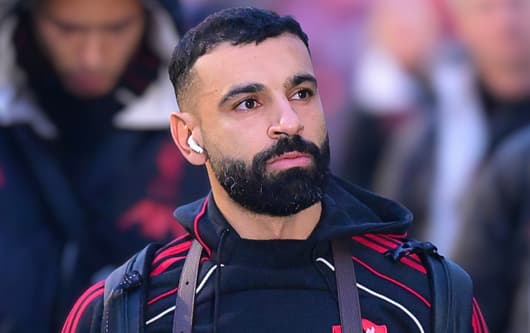-
News
- 1 hours ago
Why Nagelsmann is Ancelotti’s heir at Real Madrid
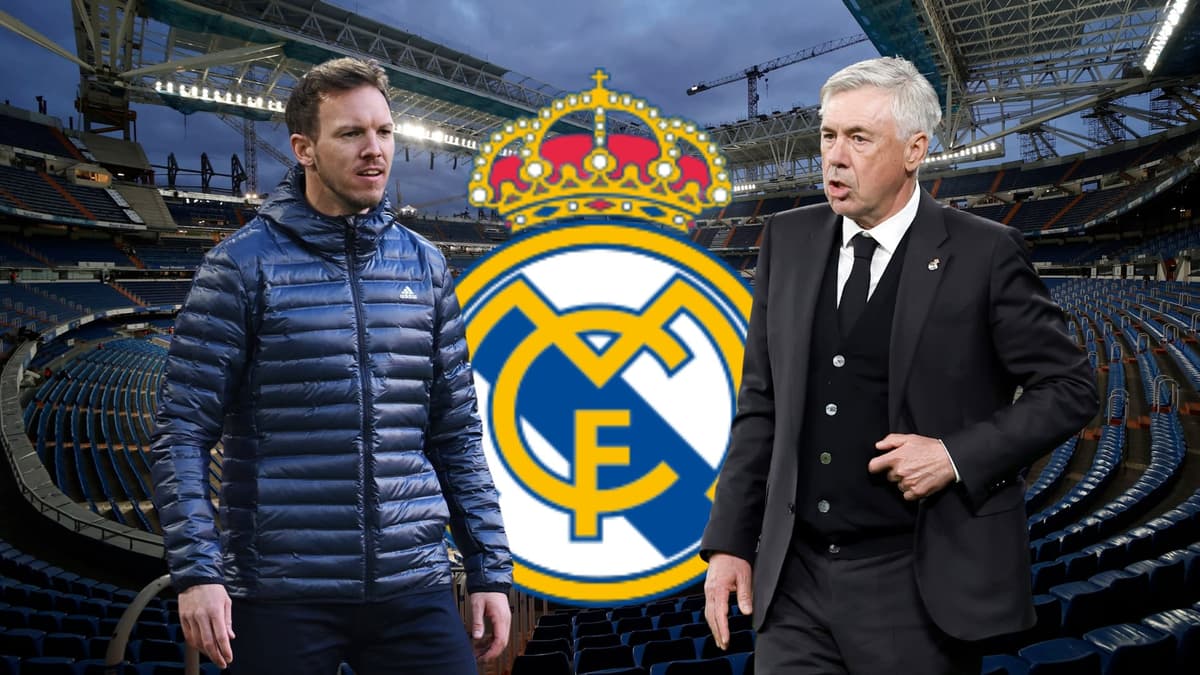
Julian Nagelsmann may have taken Bayern Munich to the last 16 of the Champions League, but he finds himself out of work after being sacked by the Bundesliga giants over the March international break.
His spell at Bayern was far from a disaster, and that is evidenced by the fact he has been subsequently linked to Chelsea, Tottenham and even Real Madrid. In fact, it can be argued that he has proved his suitability to manage Los Blancos – something he himself thought he wasn’t ready for a few years ago.
And that sense that he is destined to the Bernabeu is heightened by the uncertainty over the future of Carlo Ancelotti, whose contract runs until 2024 but who is being linked with the still vacant Brazil post.
MORE: Real Madrid agree deal to sign Bellingham alternative
In another world, Nagelsmann might even have been his predecessor. The young German manager has openly spoken about the approach Real Madrid made in 2018, which he declined. The reason he cited was that he felt it was too big of a step up from Hoffenheim, whom he was in charge of at the time.
That was wise reasoning from the then-30-year-old manager, but it does not hold true anymore. He has since stepped up to RB Leipzig and then Bayern Munich, so Real Madrid would feel like a natural progression.
This step up is something that sacked managers do not tend to get. However, a closer look at Nagelsmann’s work at Bayern reveals why he is suited for the Real Madrid job now.
MORE: Five players who could transfer to Real Madrid this summer
Tactical flexibility
Nagelsmann’s tenure at Bayern Munich lasted a year and a half, but he showed a lot of tactical flexibility during that time.
Before we look into that, let us first get a rough overview of how Bayern performed under Nagelsmann. Of course, they won the Bundesliga last season and made the Champions League quarter-finals, but a closer look at their underlying numbers is more worthwhile.
To do that, we will use Bayern’s xG trendline from the last three Bundesliga seasons. In this way, we will first get a sort of benchmark from 2020/21, which was Hansi Flick’s last season in Bavaria.
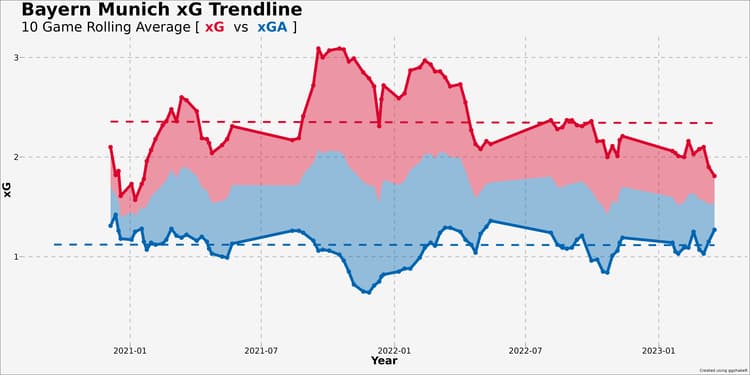
Bayern Munich’s xG trendline over the last three Bundesliga seasons.
Comparing Nagelsmann’s work to that, it is quite clear that his first season (2021/22) was a resounding success. Bayern’s defence was rock solid throughout, and their attacking production hit a couple of astonishing peaks. It is no wonder they comfortably won the title.
This season, their defence remained fairly solid in 2022 but has been trending in the wrong way since the turn of the year. Their attack, on the other hand, has dropped off a fair bit, but it is easy to understand why. Bayern lost star striker Robert Lewandowski in the summer of ‘22 and failed to replace him with a recognised No.9, forcing Nagelsmann to adjust his tactical setup.
In this regard, the 35-year-old tactician did well. His tactical flexibility helped out a fair bit.
When Nagelsmann joined Bayern, he had a reputation for being a tinkerman. At Leipzig and especially Hoffenheim, he would often change his team’s formations and systems from match to match to suit the opposition. Such reactive changes worked well at ‘lesser’ teams, who were not always expected to dominate matches, but there were questions about whether he could continue doing so at Bayern.
Unsurprisingly, the answer was no. To his credit, Nagelsmann realised this before ever trying it. He understood that Bayern were expected to impose their gameplan on their opponents as opposed to adapting to their opposition, so his tactical focus was centred around his own players.
So, Nagelsmann ended up showing a different kind of flexibility at Bayern. There weren’t many drastic match-to-match changes, but Bayern’s overall system evolved over time based on the players available and certain other factors.
In 2021/22, Bayern mostly used a 4-2-3-1 formation. With an out-and-out No.9 up top in the shape of Lewandowski, their system was relatively positionally rigid. In possession, it looked more like a 3-2-4-1 as left-back Alphonso Davies was encouraged to get forward while Benjamin Pavard effectively operated as a third centre-back on the right. Thus, Nagelsmann designed a system that suited the player profiles in the squad.
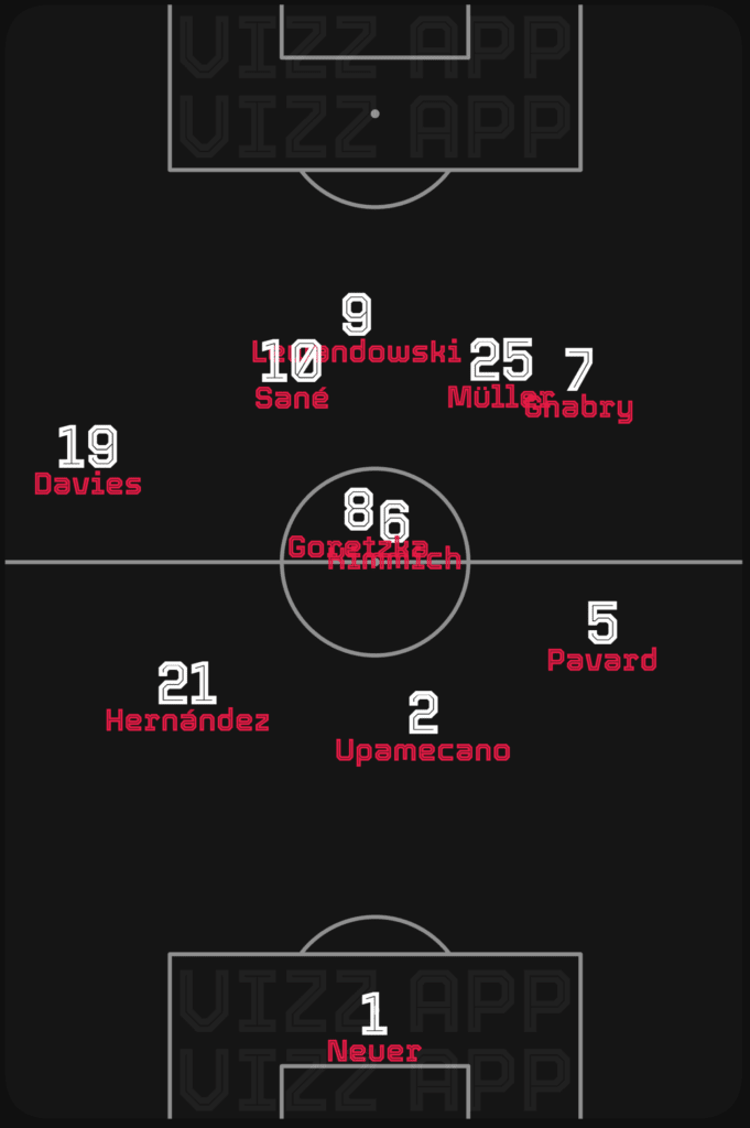
Bayern Munich’s average on-ball positions in the 2021/22 Bundesliga.
After the departure of Lewandowski, though, things had to change. The only forward Bayern signed was Liverpool winger Sadio Mane, but of course, he was not a like-for-like replacement for the Poland striker. So, Bayern shifted to a more fluid attacking system ahead of a 4-2 base structure (so a 4-2-2-2/4-2-3-1 formation nominally).
Die Rekordmeister played some attractive football in this system, which enabled the attacking players to thrive by allowing them a great deal of freedom. Jamal Musiala, for example, made great use of this to become a key player for Bayern and launch himself into the discussion for a starter’s spot in Germany’s World Cup XI.
However, at times, they seemed to lack the ability to fully control matches in this system. From late August to early October 2022, Bayern endured a terrible run of form in the league by their standards as they won just one of six matches, dropping four points behind the league leaders. One of the big issues was that they could not tighten things up at the back, keeping just one clean sheet in this period.
This prompted Nagelsmann to return to the more positionally rigid system in possession. This time, Eric Maxim Choupo-Moting was the main man up top, and he proved to be a revelation. The Cameroon striker scored nine goals and assisted three others in the months of October and November, propelling Bayern into first ahead of the World Cup break.
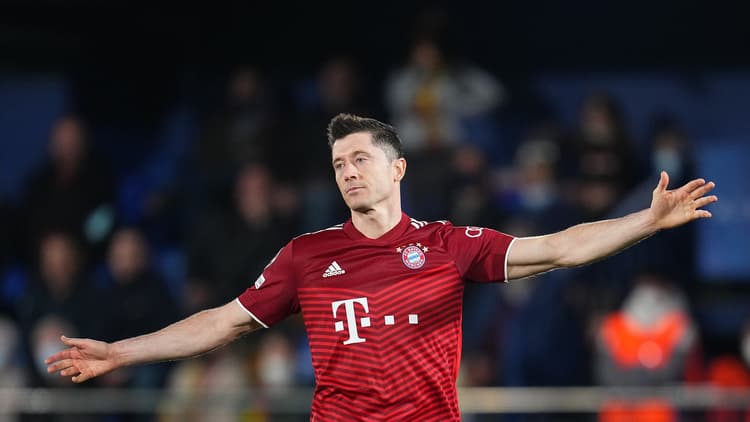
All seemed to be going well again at that point, but the tournament in Qatar would cause more problems. Germany’s group stage elimination affected the morale of their star players, who also happened to be key figures for Bayern. Additionally, Manuel Neuer ski accident debacle would have further complicated things in the dressing room.
So, FCB got off to a slow start on the other side of the World Cup break and drew their first three league matches. Results and performances started to improve thereafter as they notched up four wins on the bounce (including against Paris Saint-Germain in the Champions League knockouts) either side of a shorthanded loss to Borussia Monchengladbach. Yet, one defeat to Bayer Leverkusen later, Nagelsmann was sacked.
While some of the performances and off-field issues may be cited as reasons behind this decision, external factors played a large part. Based on reports, one of the main reasons Bayern let Nagelsmann go is because Thomas Tuchel was on the market. They had missed out on him in the past while trying to wait till the end of the season, so they did not want to repeat the same mistake twice.

Nagelsmann's suitability to Real Madrid
There can be no doubts about the fact that Nagelsmann already is a world-class manager. Given the fact that they wanted to hire him five years ago, Real Madrid should definitely be interested in his services if they have a vacancy. He must feel ready to take on that job now, and he might well be the best candidate to succeed Ancelotti.
Real Madrid’s current style of play under the 63-year-old Italian is unique among Europe’s elite sides. Unlike their eternal rivals Barcelona or English giants like Manchester City and Liverpool, Los Blancos do not use a rigid system in which their players are asked to fit in. Instead, they are given freedom to do their thing, so the system is built as a sum of their roles.
One of the keys to their success has been their harmonious dressing room environment. Nagelsmann certainly understands this, as he has famously been quoted saying that management is “30% tactics, 70% social competence”. Indeed, in spite of all the off-field hiccups, the Bayern players maintained a good relationship with the 35-year-old ahead of his departure – something that even Ancelotti could not do ahead of his sacking in 2017.
Equally, Nagelsmann has shown that he is willing to offer more freedom to his players rather than stick to a rigid system. At the same time, he is one of the brightest tactical minds around and is not afraid to make bold decisions for certain matches. All of these qualities mean that if he is allowed to operate in his element at Real Madrid, he would be a great fit.
The only question mark that might loom over him at the moment if he is immediately prepared to take over at an elite side after being burnt by Bayern, which was his boyhood club. One would imagine that he will have licked his wounds by the summer, so Real Madrid must go in for him then if Ancelotti is leaving.

